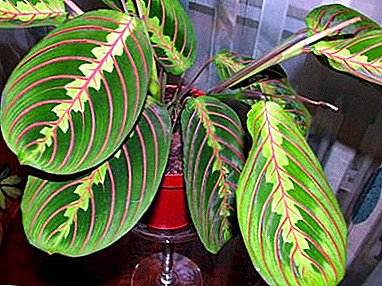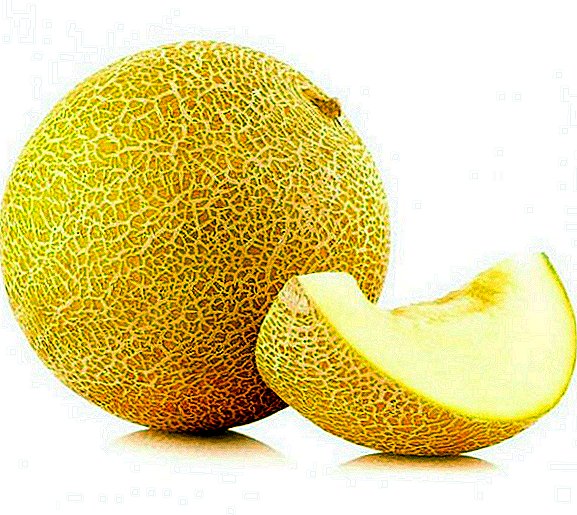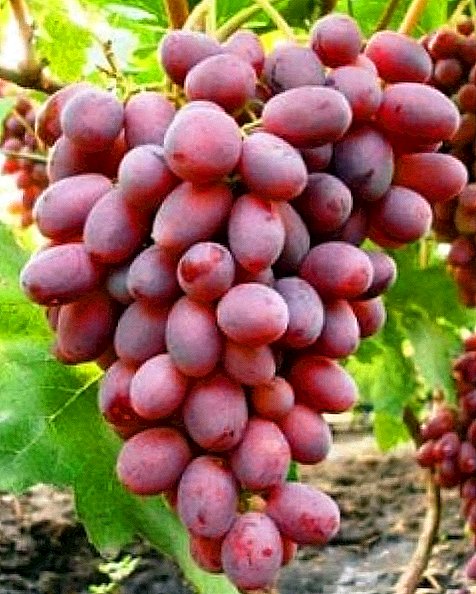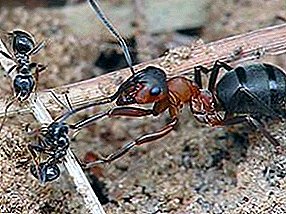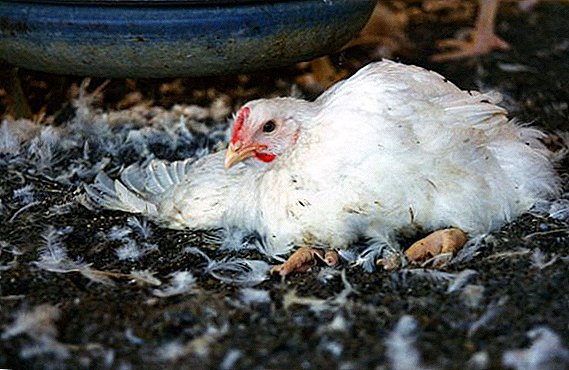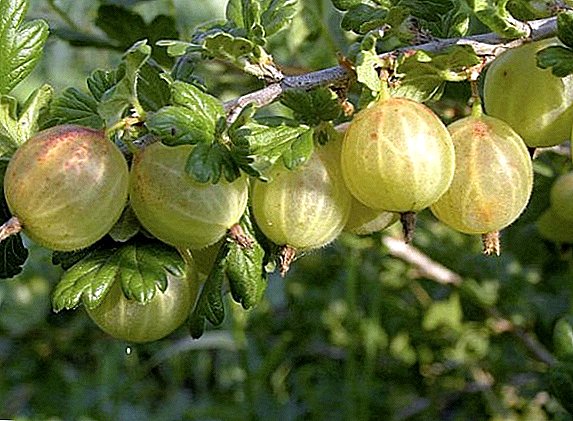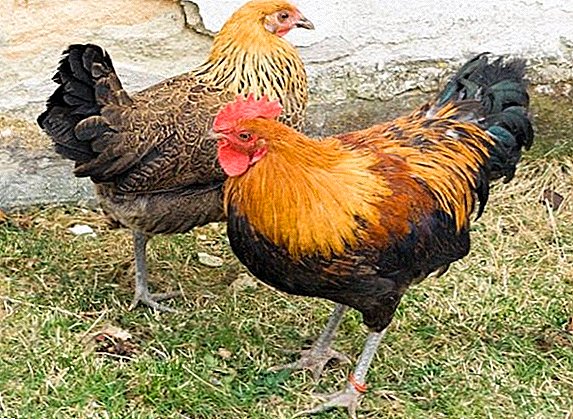 When choosing chickens for growing, farmers first of all pay attention to breeds with high egg production. This is the quality of the Czech golden hens. Consider why they have become more popular for breeding in personal farms.
When choosing chickens for growing, farmers first of all pay attention to breeds with high egg production. This is the quality of the Czech golden hens. Consider why they have become more popular for breeding in personal farms.
Inference history
Czech golden is a young breed, bred in the 60s of the last century in the former Czechoslovakia. Setting a goal - to get a view with excellent egg production, Czech breeders selected for crossing local chickens with a high degree of egg production. The result was a breed whose members are able to carry up 200 eggs per year. In the early 1970s, Czech golden chickens began to spread throughout the world. 
Description and Features
Adults have a remarkable appearance; The brightest and most characteristic feature is the golden yellow color. Daily chickens, except for golden plumage, have black blotches - this is also a distinctive feature of the breed.
Did you know? In the Czech Republic, this breed is called "golden speck" (česká zlatá kropenka).
Appearance and physique
Breed Description:
- Head - small.
- Beak - dark color, slightly arched.
- Crest - well formed and female and male. Has the form of a sheet and a bright red color.
- Neck - not very long, smoothly turns into a rectangular, medium-sized body.
- Tail - with lush plumage, it is richer and more for roosters.
- Legs - in proportion to the body short.
- Coloring - mostly yellow-gold with brown tint. At the same time, the chicken breast is covered with feathers of salmon color, and the neck is necessarily golden. The color of the rooster is rich in red feathers on the head, back and lower back, as well as black in the rest of the plumage.

Character
These chickens are active and mobile, they can spend the whole day in the pen, picking at the ground. Accordingly, the birds of this breed demonstrate increased excitability, against this background they are fearful and nervous.
Familiarize yourself with the egg breeds of chickens: Ukrainian Ushanka, Minorca, Borkovskaya bargestea, Polish Greenback, Leggorn, Grunleger, Uheilyuy, Italian Kupatchataya.
Hatching instinct
The Czech golden hens of the breed have a well-developed instinct for hatching offspring and subsequent care of them.
Productivity
Main characteristics:
- Survival: chickens - 90%, adults - 80%.
- Weight: chickens - 2-2.5 kg, roosters - 2.3-2.8 kg.
- The ability to carry eggs manifests itself from 5 months.
- Egg production an average of 170 eggs per year, a maximum of about 200 eggs.
- Egg weight - 55-60 g. The shell has a cream color.

What to feed
Since the breed is active and, being on a walking range, it tries to spend excess energy, for its recovery the hens need good nutrition.
Chickens
For the growth and development of chicks, correct selection of the diet is extremely important. The first couple of weeks, the youngsters are fed with crushed grain and grated egg. When the chickens grow up, at the age of two months, corn, yeast, bran and bone meal are added to the diet.
Learn more about the diet of chickens from the first days of life.
Adult chickens
For good egg production, laying hens should be fed with high quality and balanced. Their diet should consist not only of ordinary grain, but also of germinated, including eggs and their shell (it can be replaced with chalk). Also in the diet include yeast and corn - in limited quantities, so as not to provoke obesity.
Being in the open-air cage and picking in the ground, chickens find various worms and bugs, which is also good for the body. Grass, planted in the pen, well complement the diet.  Novice poultry farmers can use purchased feed with the addition of vitamins and minerals. In such feed it is necessary to mix sand, which will help the birds digest food better.
Novice poultry farmers can use purchased feed with the addition of vitamins and minerals. In such feed it is necessary to mix sand, which will help the birds digest food better.
It is better to feed with grain in the morning and in the evening, and in the afternoon - with mineral additives, mash and greens. Sample menu for each day for one individual:
- grain - 50 g;
- bone meal - 2 g;
- mineral components and vitamins - 15 g;
- juicy greens - 30 g;
- mash - 40 g
Important! To succeed in breeding the breed, it is necessary to use the services of poultry farms, acquiring chickens under 5 months old.
Conditions of detention
Czech chickens are not particularly demanding to the living conditions, they can easily adapt to the climate in the area where they will have to live. If the area is safe for chickens, they can live in semi-free conditions. 
Coop Requirements
Although chickens are distinguished by high endurance, these birds need a quality room for a comfortable sleep and wintering.
We advise you to read about the hen house: construction, insulation, ventilation, preparation for winter (heating, lighting); the construction of a portable house.
A chicken coop must meet certain requirements:
- The area of the room depends on the number of birds, at the rate of 1 square. m square for 4 hens.
- The floor can be earthen, cast of concrete or wood (preferably in two layers with insulation). A bed of straw or sawdust spreads on it, 10 cm thick in the summer and 15 cm in the winter.
- Room temperature: in the summer of 22 ° С, in the winter not lower than 15 ° С.
- Perches should be removable for ease of cleaning, made of timber with rounded corners. The length is calculated taking into account the fact that one bird needs 30 cm length of the pole.
- Nests are arranged from boxes or baskets at the rate of 1 nesting place for 4 hens. For convenience, the bottom can be made tilted to roll the eggs into a specially equipped egg collector. The bottom of the nest is lined with straw.
- For the safety of livestock, in addition to vaccination against diseases, it is necessary to carry out cleaning and disinfection every two months in the premises of the hen house.
Important! For maximum profit in one hen house should be no more than 50 layers.
Walking yard
A place for walking, if you block it near the hen house, you need to plan at the rate of 7 square meters. m per bird.  In general, the more places to walk, the higher the productivity. The corral is fenced off with a net-rabbi. To protect against predators, the fence needs to be deepened into the ground by 30 cm. From above they also stretch a net, saving them from predatory birds or shading a courtyard.
In general, the more places to walk, the higher the productivity. The corral is fenced off with a net-rabbi. To protect against predators, the fence needs to be deepened into the ground by 30 cm. From above they also stretch a net, saving them from predatory birds or shading a courtyard.
Feeders and drinkers
In the distribution network, you can buy any devices for food and water - the main thing is that they are sufficient for the simultaneous feeding of the entire livestock.
Read also about the construction of automatic feeders for chickens (bunker, PVC pipes) and drinkers (from the bottle).
You can adapt something that is at home, given that it is better to pour only dry food in wooden containers, and plastic or iron containers are easy to clean. 
How to endure winter cold
Czech Golden Hens adapt well to low temperatures, but in winter they are best kept in chicken coops.
Advantages and disadvantages
Breed Benefits:
- High survival rate - more than 90%.
- The instinct of motherhood is perfectly developed - beautiful hens.
- The content of unpretentious, easily adapt to different conditions.
- The early start of egg production is from 5 months.
- The feed is not demanding.
- High productive abilities.
Poultry farmers have only one drawback in chickens of this breed - they are very active, because of this they are shy.
Did you know? Chickens rush only in the light of the day - even if this moment came at night, the bird will wait for dawn. Therefore, to increase egg production is necessary with the help of electric bulbs. provide light day lasting up to 18 hours.
Video: Czech golden breed of chickens
If you are interested in Czech golden chickens, you should seriously consider purchasing them. This breed will not only delight you with high egg production rates, but also will be an excellent decorative addition to the site due to its bright appearance.



